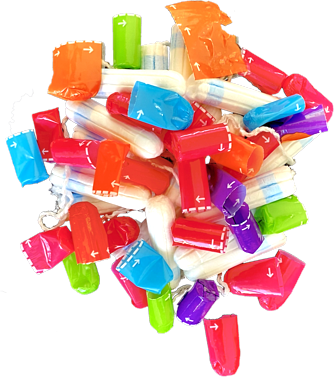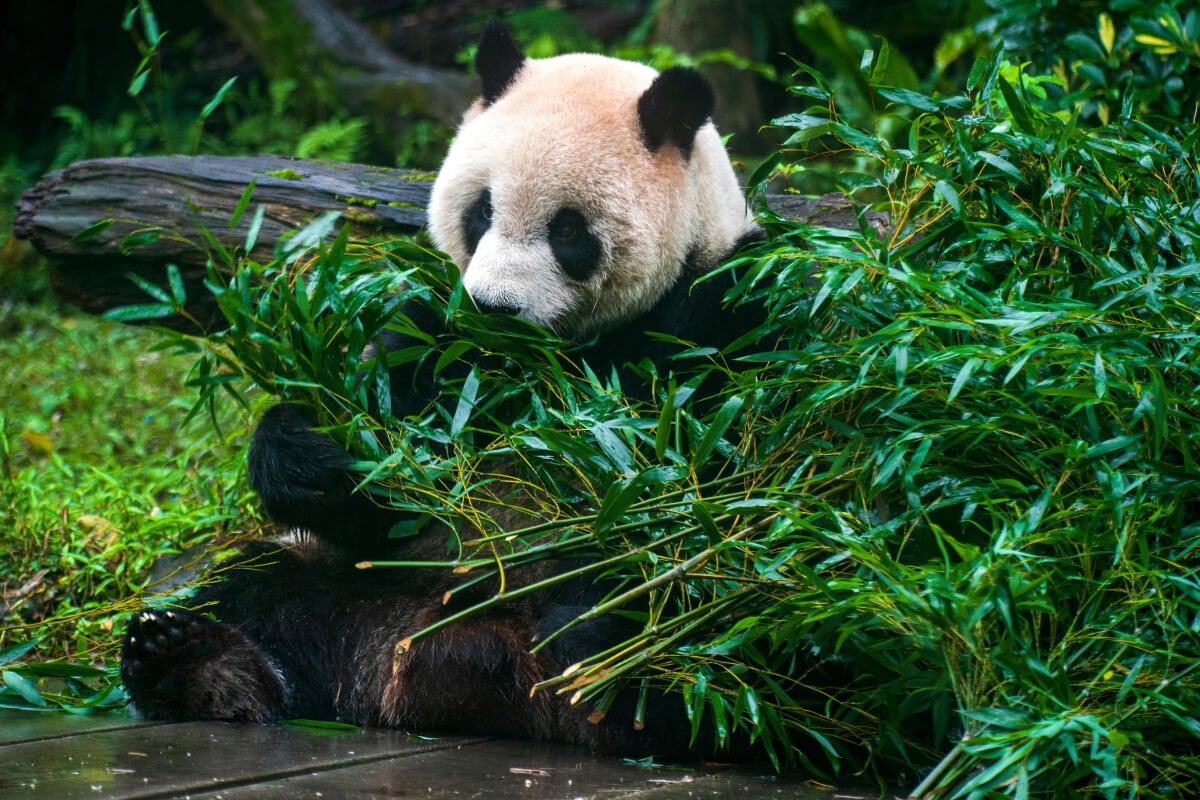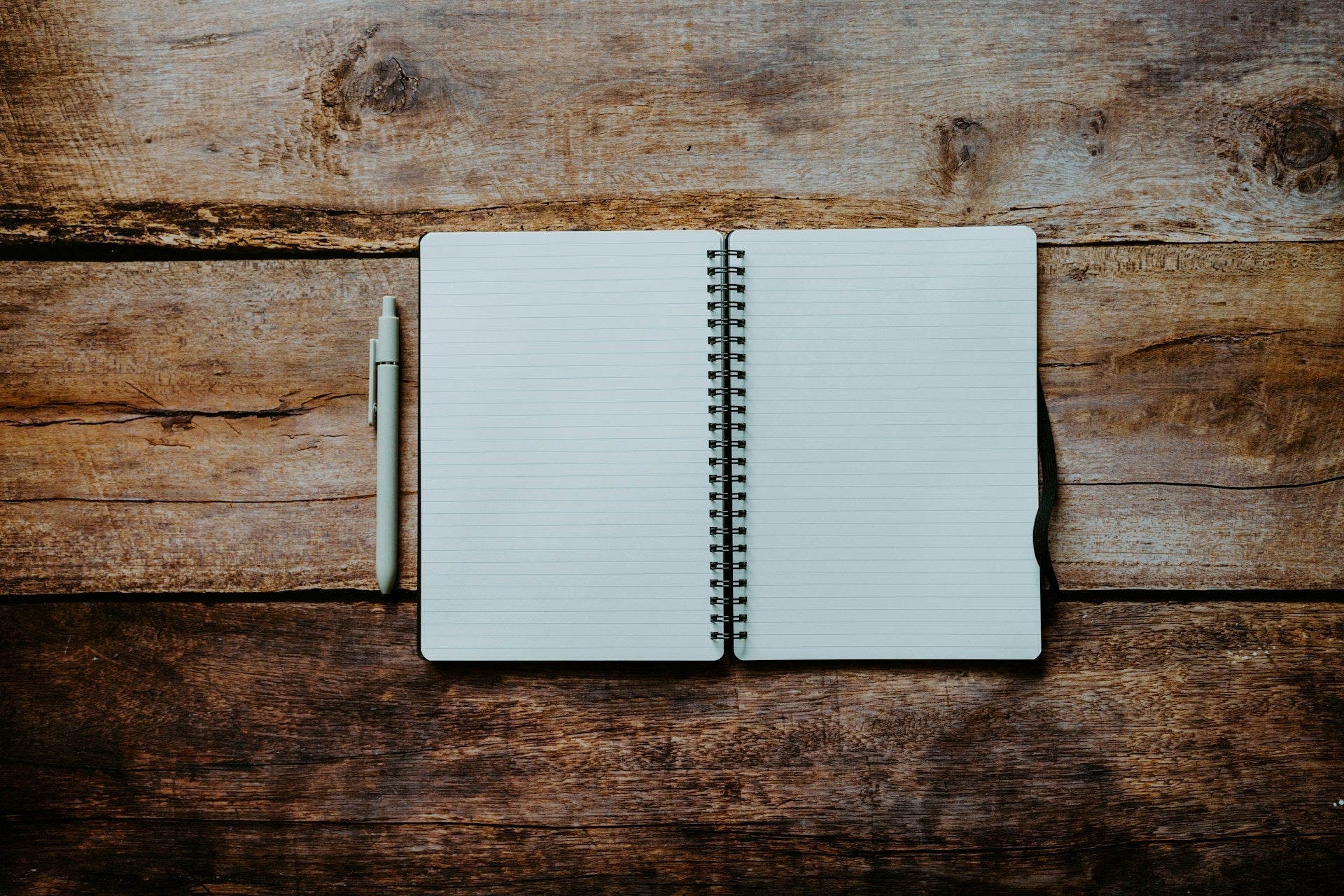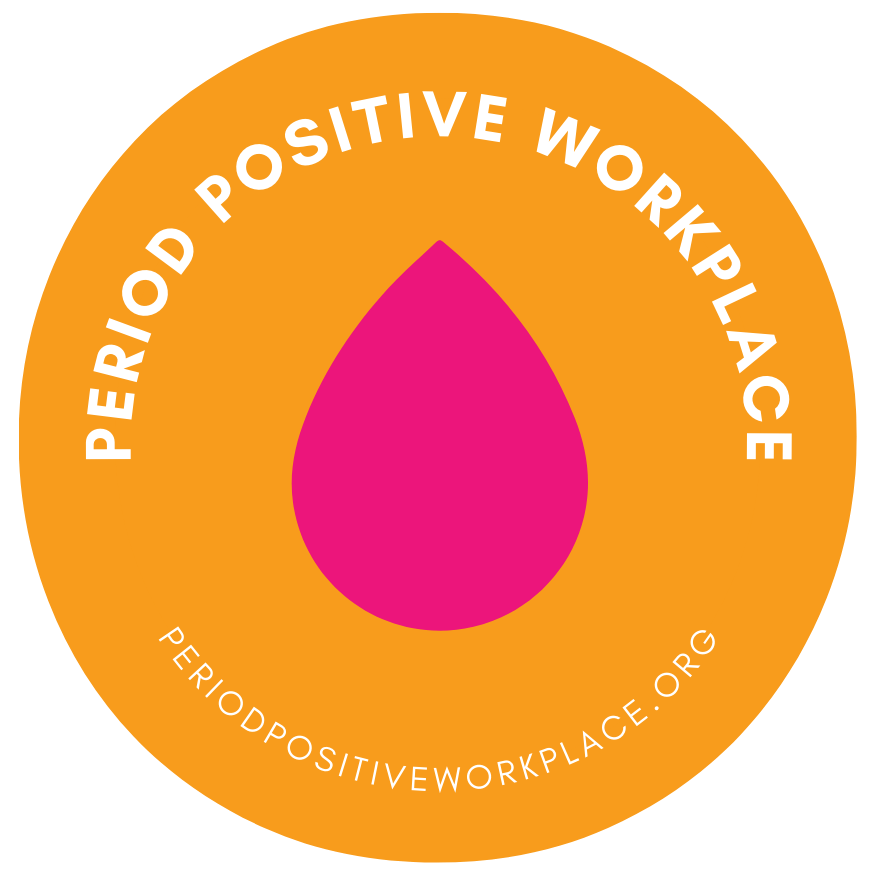The short answer is no, unless they're made of paper. But there's much more to the environmental impact of period products than just the tampon wrapper. Let's look at the whole picture.
-- Or, click here to skip to the section "can you recycle tampon wrappers?" --
How would you feel about getting sat on by a panda?
Sure, they’re cute. But you probably wouldn’t want one to sit on you. They’re too heavy for that.
Think for a moment on how much that cuddly bear weighs.
That bear has the same weight as the lifetime period product waste from an average woman.
That's right, the average woman throws away period products up to roughly the weight of a panda throughout her life. A fully grown male panda, by the way. The females would hurt less if they sat on you.
A whole panda, 140kg of period waste, per person.
It’s quite a lot when you consider a tampon only weighs about 2 grams.
Tampons and pads may be light and small, but they often come with a lot of non-biodegradable packaging, contain synthetic fibres, and can take significant resources to produce.
In just a single year, typical period product use leaves a carbon footprint equivalent to 5.3kg of CO2. This is equivalent to nearly 9 loads of washing.
Here’s what the potential landfill waste from a single packet of tampons can look like:

Let’s take a closer look at how the environmental impact of tampons adds up…
The Scale of Tampon Waste
The numbers are staggering. On average, a woman will use about 11,000 tampons in her lifetime. Over 100 million women worldwide use tampons. Each year, over 45 billion period products (including tampons applicators and pads) are discarded. 27,938 tampons and applicators were collected on beaches in one day alone, in 2015.
All up, we create 3,200,000 kilograms of waste, or the weight of 45 Space Shuttles or 550 elephants, from period products every year.
Click here to see 550 elephants.
The biggest tampon brands produce tampons made in part from synthetic materials and wrapped in polyethylene plastic. All of this can take centuries to degrade in landfill.
A standard commercial single-use non-organic tampon can have a centuries-long environmental impact from:
- the tampon's materials
- the withdrawal cord
- the manufacture process of the tampon
- the wrapper over each and every tampon
- the box the tampons are in
- the plastic wrapper over the box of tampons
- the freight and delivery of materials from farm to factory to shop
Are Tampon Materials Biodegradable?
The materials in your tampon will vary by manufacturer, but here are some of the materials common in the tampons and packaging of leading suppliers in Australia:
-
Cotton (bleached or unbleached, organic or not)
-
Rayon (bleached or unbleached)
-
Polyester (often in the withdrawal cord)
-
Polypropylene
-
Polyethylene
Cotton
Cotton is a biodegradable natural fibre made from the cotton plant. It's everywhere--your favourite t-shirt, your bed sheets, and your "fancy pants-on kind of work-from-home day" trackies (or 'track pants' for our international readers) are likely all made from cotton.
Commercially harvested cotton is often a water-intense resource, and a prime culprit for pesticide use around the world. However, cotton can be produced organically (no added chemicals, dyes, bleaches, chlorine or dioxins) and with sustainable farming practices. It tends to biodegrade faster than bamboo (which can take around a year).
Biodegradation time:
- As little as 11 weeks in perfect conditions.
- Usually: 1-5 months in landfill.
Rayon
Rayon is an artificial fibre made from plant cellulose. It's a very broad term for many different types of fibres which could be made from wood pulp, bamboo, oranges or even cotton waste. Whether this is a sustainable material depends on the source of the origin material, the management practices of the material harvesting and which additional chemicals are used in the manufacture process. So cotton waste rayon is more sustainable than old-growth forest pulp rayon, for example.
Rayon can be more readily biodegradable than cotton, biodegrading in just a few weeks in the right conditions, making it an exception to the general rule that artificial fibres take longer to biodegrade. But it is still a synthetic fibre, relying on added chemicals mixed with the cellulose material to produce the fibre. Which chemicals are used, and how they are disposed of after the manufacturing process, determine how sustainable the rayon is.
Rayon (along with polyester) is also allegedly a contributor to Toxic Shock Syndrome associated with tampon use. More on that in a later post.
So rayon is too broad a term to say definitively whether it is a sustainable option in your tampon or not. It's nearly certainly better for the environment than polyester, but probably worse than organic cotton. Check your tampon pack labels and you'll find there's not enough information to tell precisely how sustainable the rayon in the tampons is.
Biodegradation time:
- As little as 6 weeks in perfect conditions.
- Usually: decades in landfill.
Polyester
Polyester is a synthetic fibre made from petrochemicals, so not only is polyester not biodegradable, it's made from non-renewable resources. To be even more clear, polyester is a type of plastic. It's the third-most commonly used plastic.
The manufacturing process creates nitrous oxide and uses a lot of energy, water, and potentially contaminating lubricants. Plus, polyester contributes to the presence of microplastics in the environment. And there's even evidence that working in a polyester factory can be harmful to the health of workers. Call me picky, but I don't want this inside my body!
Biodegradation time:
- 20 years in perfect conditions.
- Up to 200 years.
Polypropylene (PP)
Polypropylene is one of the world's most common types of plastic. Lightweight and water-resistant, it's used in a lot of packaging, upholstery, toys and even car dashboards.
Polypropylene is made from crude oil and whilst it is usually recyclable, only around 1% is actually recycled worldwide and not all council collections accept it.
Biodegradation time:
- From 20-30 years.
- Up to many centuries.
Polyethylene (PE)
This bad, bad boy is everywhere. Polyethylene is the most common plastic in the world, used commonly for packaging. It's polypropylene's more expensive, more sturdy brother, also derived from crude oil (a non-renewable resource).
There are multiple variants of polyethylene, used in products such as milk cartons, food packaging and plastic drink bottles. Like polypropylene, it is usually recyclable but you'd need to check with your local council. When not recycled, however, it hangs around for a long, long time.
Biodegradation time:
- Potentially a few months in perfect conditions (which involves larvae of specific waxworm species.
- Usually 500 years or more.
Sustainable Alternatives to Disposable Tampons
So, disposable tampons could be reasonably eco-friendly or could be causing centuries of damage, depending what’s in them and around them (the packaging).
There are some small changes, and some complete alternatives you could choose, to minimise the environmental impact of your period products. But it’s not all bad news when it comes to the trusty disposable tampon.
The introduction of the disposable tampon and pad were actually a boon, or at least were marketed as such, for women's rights and ability to participate in the workforce. Being able to discreetly and conveniently manage their periods allowed women to join the labour force without having to worry about storing and transporting used menstrual cloth, or even showing any signs to their male colleagues that they were on their period.
The first pack of disposable pads was sold in 1921 and the "modern" tampon was first invented in 1929, with a paper/cardboard applicator. The construction and materials of the tampons you use today may have been refined a bit, but the commercial tampon is largely still the same disposable period product it was nearly a century ago.
However, nowadays we need to be smarter with the waste from period products. As researcher Ann Borowski says:
Here are some ways you can start being more sustainable with your period:
Ditch the Applicator
There are a few options available to make handling your period a more environmentally friendly affair. First, avoid tampons with plastic applicators. Whilst some brands of non-applicator (a.k.a. 'digital') tampons also have synthetic materials, the quantity of single-use plastic from an average applicator tampon is many times that of the non-applicator version.
Applicators are generally made of polyethylene, will take centuries to biodegrade and are one of the biggest environmental impacts of periods. Pixii only stock digital tampons for this reason.
If you prefer the applicator, consider a reusable applicator like this one from DAME in the UK.
Choose the ‘Right’ Tampons - Look for Biodegradable Materials
Aside from minimising plastic by avoiding the applicator, you can also choose your tampon brand carefully to minimise the plastic in the packaging and in your body.
By law in Australia, all tampons sold must disclose their ingredients on the packaging somewhere. Look out for the potentially eco-damaging and body-unfriendly materials we’ve covered above, such as polyester, polyethylene and rayon.
100% organic cotton varieties are likely to be the most sustainable option.
Can You Recycle Tampon Wrappers?
For the most common tampon brands, no, you cannot.
You can generally tell by the look and feel of the wrapper - if it’s plastic, unless it is compatible with your local recycling collection then it is destined for landfill where it will spend the next 450+ years. If it’s a paper wrapper, you can probably recycle it with general paper recycling. To be sure, check the details on the packaging.
16 out of 27 tampon varieties on the shelf in our local Coles also had a single-use plastic wrap over the box, in addition to each tampon being individually wrapped in single-use plastic. If you can find an option with no plastic in the packaging, you’ll be helping your environmental footprint even more.
Plastic packaging of the tampon or the whole box is so common that we had to start our own tampon brand in order to not add plastic to landfill. It was just that impossible to find tampon alternatives with zero plastic packaging. So now with Pixii you can get tampons with recyclable paper wrappers, delivered to your home or at your workplace.
There are also other options to the disposable tampon entirely.
Reusable Alternatives
You could take things a step further by choosing a reusable method for handling your menstrual flow. Whilst not for everyone, there are a few reusable alternatives that suit some people very well and have limited ongoing impact on the environment.
A menstrual cup (a.k.a. a 'moon cup') is a common reusable alternative. Usually made of silicon, they're inserted vaginally, similar to a tampon, but you simply take it out, wash it and re-use it next time. There are at least 5 popular brands of menstrual cup in Australia, and one cup should last 2-4 years if cleaned and stored correctly.
Reusable pads are another option for lowering your single-use period waste. Just what they sound like, they're similar to disposable pads but are usually made from cotton cloth and can just be washed and dried between uses.
Then there's period underwear. You may have already seen brands like Thinx or ModiBodi as the period-underwear movement has picked up popularity in the last few years. The concept is similar to the other reusable alternatives - you only need to buy once, and then just wash and re-use your period underwear like any other pair. But of course, unlike your average undies, these ones are specially designed to contain your flow.
What Works For You?
Choose carefully when buying your period products and you may find that you are putting nicer materials into your body or changing your period habits entirely.
Either way, you could cut down on that 140kg adult male panda’s worth of landfill that many women create by handling their periods on autopilot, without a conscious eco-friendly approach.
One small act you could make right now is to share this article with someone you think might care about the environmental footprint of period products - if they change to a more sustainable habit, then you’ve helped the planet just by sharing!
Have you made a switch? Do you have a sustainable alternative that we haven’t covered? Let us know in the comments.



